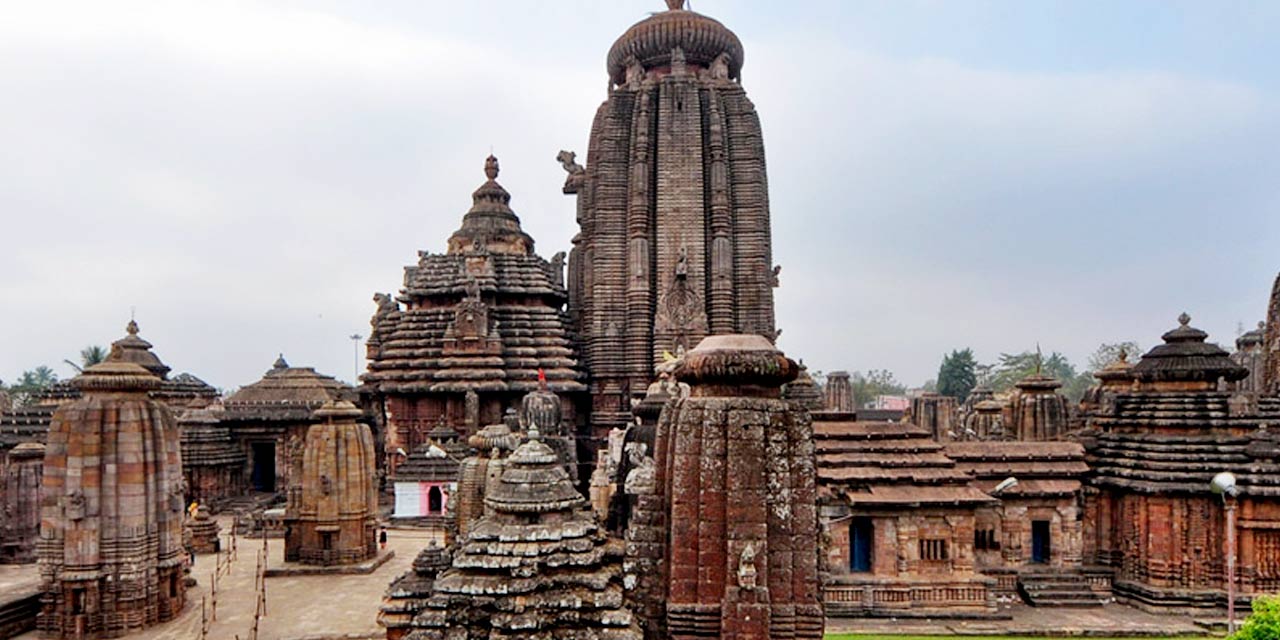Why Lingaraj Temple, Bhubaneswar, Odisha Is Famous for Its Maha Shivaratri Festival.

India’s temple festivals are more than rituals—they are immersive experiences that bring faith, heritage, and community together. While many states celebrate Maha Shivaratri with grandeur, few places capture its true spirit as vividly as Odisha’s cultural capital. The city’s heartbeat quickens as chants echo, lamps glow, and thousands of devotees gather in devotion. All of this culminates at the magnificent Lingaraj Temple, Bhubaneswar, Odisha, where Maha Shivaratri is not just observed but lived in every possible sense.
A Temple Rooted in History and Faith
The temple itself, dating back to the 11th century, is considered a crown jewel of Kalinga architecture. Its towering spire, rising over 180 feet, dominates Bhubaneswar’s skyline and instantly commands reverence. Every stone tells a story of artistry—intricate carvings of deities, dancers, and mythological tales that have withstood centuries. Visitors often marvel not just at its scale, but at how seamlessly spirituality and art blend here. Yet what makes the temple extraordinary is how these ancient structures continue to pulse with life during Maha Shivaratri. On this night, the temple transforms into a cosmic theater where timeless traditions are enacted with unwavering devotion.
Rituals That Carry Centuries of Meaning
The Maha Shivaratri celebration at Lingaraj Temple begins before dawn and stretches until the next day. Fasting devotees start their journey with prayers and bathe in the Bindusagar lake, believed to hold purifying powers. Inside the temple, priests meticulously perform abhishekam, bathing the Shiva lingam with water, milk, honey, and bel leaves. As evening approaches, the temple complex glows with thousands of oil lamps, symbolizing the triumph of light over darkness. By midnight—the most sacred hour—crowds swell, and the air is electric with chants of “Om Namah Shivaya.” For many, staying awake through the night becomes a spiritual offering, a way of aligning their energy with Lord Shiva’s cosmic dance.What sets the experience apart is the sense of inclusivity. Pilgrims, locals, and even first-time travelers become part of a collective act of devotion. Much like the trekking pilgrims at Naina Devi Temple, Bilaspur, Himachal Pradesh, here too, distance, fatigue, or crowds seem insignificant compared to the joy of being present at such a sacred moment.
The Value of Guidance and Insight
Amid the elaborate rituals, it’s easy for newcomers to feel overwhelmed. Understanding the meaning behind these practices adds depth to the experience. This is why voices like Naman Darshan, respected for his expertise in decoding temple traditions, hold great value. He has a gift for explaining how practices—such as the offering of bel leaves or fasting during the night—connect to everyday lessons of balance and discipline. When devotees hear his interpretations, they find the rituals less intimidating and more enriching. Instead of just seeing a spectacle, they begin to sense the profound layers of symbolism at play, transforming a festival into a personal journey of reflection.
The Collective Energy of Devotion
Few sights rival the experience of standing amidst thousands of people with a shared purpose. The chants rise in unison, hands fold in prayer, and the fragrance of incense fills the night air. The crowd is not restless—it is united, patient, and reverent. The midnight rituals, where priests adorn the lingam with flowers and sacred offerings, feel like the peak of spiritual intensity. For many, the experience is so moving that it leaves a lifelong imprint.This phenomenon isn’t unique to Odisha. Across India, every region adds its own cultural texture to Maha Shivaratri and other festivals. In the east, the devotional singing at ISKCON, Mayapur, West Bengal resonates with equal passion, though in a different musical rhythm. Together, these celebrations highlight India’s spiritual diversity while underscoring a common thread—faith expressed through unity.
Why Pilgrims Keep Returning
For those who have once attended Maha Shivaratri at Lingaraj Temple, returning often becomes a tradition. Families bring children so the next generation can experience its magic, while solo travelers describe it as an awakening. Some compare it to witnessing sunrise in the Himalayas or participating in the Ganga aarti at Varanasi—it’s less about watching and more about belonging. Even those not deeply religious admit that the charged atmosphere of the temple during this festival makes them reflect on their own inner lives.Local residents too prepare weeks in advance, ensuring food stalls, decorative lighting, and cultural programs complement the temple rituals. It’s a reminder that festivals here are not limited to the shrine; they spill into the streets, creating an environment where the entire city participates in devotion.
Final Thoughts
The fame of Maha Shivaratri at Lingaraj Temple, Bhubaneswar, Odisha is not accidental—it is the product of centuries of unbroken tradition, heartfelt devotion, and a community that continues to cherish its heritage. The grandeur of the rituals, the collective spirit of the devotees, and the wisdom shared by cultural voices like Naman Darshan make this celebration extraordinary.For a first-time visitor, this is not just about seeing a temple—it’s about experiencing a living tradition. It is standing shoulder-to-shoulder with thousands of others, feeling the vibration of chants, and realizing that faith, when celebrated together, becomes almost tangible. Whether you are a devout pilgrim or a curious traveler, Maha Shivaratri here is not to be missed. It is a chance to witness devotion at its most alive and understand why this ancient temple continues to inspire generations across India.
